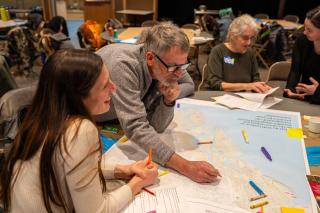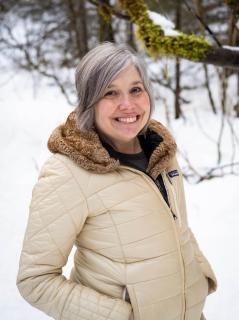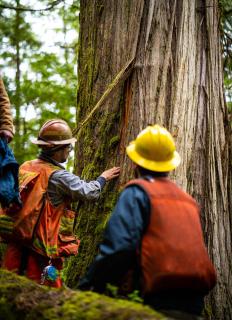Seeing, listening, collaborating: What it takes to revise Alaska forest plan
ALASKA—What has changed in southeast Alaska and Tongass National Forest over more than 25 years? That is the driving question behind the current revision of the Tongass Forest Plan, which was last updated in 1997. Barb Miranda, newly appointed deputy forest supervisor, is overseeing the revision of the plan.
Miranda has worked for the agency since she was 19 years old and has lived in southeast Alaska with her family since 2007. She reflects on the current revision process and collaborating with Southeast Alaskans to make this the best forest plan revision possible:
SEEING
Revising the forest plan begins with seeing; seeing what has changed since the plan’s last update. What has changed on the land? In the weather?
"The only constant in southeast Alaska is those who have lived here and stewarded this place since time immemorial. The Tongass is 17 million acres of public lands surrounding Southeast Alaska communities. So much has changed since the last time this plan was revised, so what we want to do is much more holistic than a targeted amendment. For example, how is climate change affecting the state of the rainforest and oceans? How are these changes impacting people’s ability to subsist and practice traditional ways of life here? We also have not looked at tourism on the Tongass in a comprehensive plan since 1997, so this is an opportunity to share opinions about what is known about tourism on the Tongass,” said Miranda.
LISTENING

To create an effective plan, we must listen to the people who live in southeast Alaska. We must develop relationships that are respectful to the disparate needs of the many communities that rely upon the forest.
“We are trying to listen differently, and with that comes relationship and trust-building. We are ‘flipping the script’ on how we engage with the public for this process by partnering with the community development institution, Spruce Root, and the Juneau Economic Development Council and working with the regional collective-impact network, Sustainable Southeast Partnership, to help us think outside the box. With this revision and planning process, we're bringing our whole selves. We might be a federal agency, but we live in these communities and care about what happens on the Tongass. We want to hear from the people who live here about what they want us to prioritize, and we want to create a transformational plan based on what is possible in our future,” Miranda added.
COLLABORATING
We must work alongside local communities, Alaska Native peoples, who have a long-standing relationship with the lands and waters, and all the people who use the forest regularly, whether for recreation, work or harvesting. Much of the local economy is reliant upon the forest in some fashion, so we must develop a plan that will be useful for years to come.
“The Tongass belongs to everyone, so everyone can participate in this process. We are asking about what kind of activities should be prioritized and where they should take place. We want to know what are the economic and cultural benefits that the Tongass should provide for the communities and businesses of Southeast Alaska? I am honestly super excited about this process. It is our opportunity to solidify Southeast Alaska values into a plan that will live on for decades. If we do this right, we will shape the future of the Tongass in a meaningful way,” concluded Miranda.
REVISION TIMELINE
The Tongass Forest Plan will shape how the agency makes decisions on the forest. With the assessment phase in progress through 2024, and an implementation goal of 2028, this multi-year initiative will guide the next 15 years and beyond on the Tongass.


